Safety and Efficacy of Autologous Stem Cell Treatment for Facetogenic Chronic Back Pain
Abstract
1. Introduction
2. Materials and Methods
2.1. Inclusion and Exclusion Criteria
2.2. Tissue Preparation and Treatment
2.3. Cell Yield, Cell Viability, Number of Living Cells per mL Lipoaspirate and Cell Size
2.4. Injection of the ADRCs
2.5. Follow-Up
3. Results
3.1. Preoperative Symptoms
3.2. Pain Levels and Oswestry Disability Index
3.3. Complications
4. Discussion
5. Conclusions
Author Contributions
Funding
Institutional Review Board Statement
Informed Consent Statement
Data Availability Statement
Acknowledgments
Conflicts of Interest
References
- Badgley, C.E. The Articular Facets in Relation to Low-Back Pain and Sciatic Radiation. J. Bone Jt. Surg. 1941, 23, 481–496. [Google Scholar]
- Goldthwait, J.E. The Lumbo-Sacral Articulation; An Explanation of Many Cases of “Lumbago,” “Sciatica” and Paraplegia. Boston Med. Surg. J. 1911, 164, 365–372. [Google Scholar] [CrossRef]
- Carrera, G.F.; Haughton, V.M.; Syvertsen, A.; Williams, A.L. Computed tomography of the lumbar facet joints. Radiology 1980, 134, 145–148. [Google Scholar] [CrossRef] [PubMed]
- Helbig, T.; Lee, C.K. The lumbar facet syndrome. Spine 1988, 13, 61–64. [Google Scholar] [CrossRef] [PubMed]
- Manchikanti, L.; Boswell, M.V.; Singh, V.; Pampati, V.; Damron, K.S.; Beyer, C.D. Prevalence of facet joint pain in chronic spinal pain of cervical, thoracic, and lumbar regions. BMC Musculoskelet Disord. 2004, 5, 15. [Google Scholar] [CrossRef] [PubMed]
- Manchikanti, L.; Pampati, V.; Fellows, B.; Bakhit, C.E. The diagnostic validity and therapeutic value of lumbar facet joint nerve blocks with or without adjuvant agents. Curr. Rev. Pain. 2000, 4, 337–344. [Google Scholar] [CrossRef] [PubMed]
- Nachemson, A.L. Newest knowledge of low back pain. A critical look. Clin. Orthop. Relat. Res. 1992, 279, 8–20. [Google Scholar] [CrossRef]
- Raskin, S.P. Degenerative changes of the lumbar spine: Assessment by computed tomography. Orthopedics 1981, 4, 186–195. [Google Scholar] [CrossRef]
- Lewinnek, G.E.; Warfield, C.A. Facet joint degeneration as a cause of low back pain. Clin. Orthop. Relat. Res. 1986, 213, 216–222. [Google Scholar] [CrossRef]
- Schwarzer, A.C.; Aprill, C.N.; Derby, R.; Fortin, J.; Kine, G.; Bogduk, N. Clinical features of patients with pain stemming from the lumbar zygapophysial joints. Is the lumbar facet syndrome a clinical entity? Spine 1994, 19, 1132–1137. [Google Scholar] [CrossRef]
- Dreyer, S.J.; Dreyfuss, P.H. Low back pain and the zygapophysial (facet) joints. Arch. Phys. Med. Rehabil. 1996, 77, 290–300. [Google Scholar] [CrossRef] [PubMed]
- Igarashi, A.; Kikuchi, S.; Konno, S.; Olmarker, K. Inflammatory cytokines released from the facet joint tissue in degenerative lumbar spinal disorders. Spine 2004, 29, 2091–2095. [Google Scholar] [CrossRef] [PubMed]
- Carette, S.; Marcoux, S.; Truchon, R.; Grondin, C.; Gagnon, J.; Allard, Y.; Latulippe, M. A controlled trial of corticosteroid injections into facet joints for chronic low back pain. N. Engl. J. Med. 1991, 325, 1002–1007. [Google Scholar] [CrossRef] [PubMed]
- Aggarwal, S.; Pittenger, M.F. Human mesenchymal stem cells modulate allogeneic immune cell responses. Blood 2005, 105, 1815–1822. [Google Scholar] [CrossRef]
- Alt, E.U.; Schmitz, C.; Bai, X. Perspective: Why and How Ubiquitously Distributed, Vascular-Associated, Pluripotent Stem Cells in the Adult Body (vaPS Cells) Are the Next Generation of Medicine. Cells 2021, 10, 2303. [Google Scholar] [CrossRef]
- Furia, J.P.; Lundeen, M.A.; Hurd, J.L.; Pearce, D.A.; Alt, C.; Alt, E.U.; Schmitz, C.; Maffulli, N. Why and how to use the body’s own stem cells for regeneration in musculoskeletal disorders: A primer. J. Orthop. Surg. Res. 2022, 17, 36. [Google Scholar] [CrossRef]
- Winnier, G.E.; Valenzuela, N.; Peters-Hall, J.; Kellner, J.; Alt, C.; Alt, E.U. Isolation of adipose tissue derived regenerative cells from human subcutaneous tissue with or without the use of an enzymatic reagent. PLoS ONE 2019, 14, e0221457. [Google Scholar] [CrossRef]
- Sadat, S.; Gehmert, S.; Song, Y.H.; Yen, Y.; Bai, X.; Gaiser, S.; Klein, H.; Alt, E. The cardioprotective effect of mesenchymal stem cells is mediated by IGF-I and VEGF. Biochem. Biophys. Res. Commun. 2007, 363, 674–679. [Google Scholar] [CrossRef]
- Alt, E.; Winnier, G.; Haenel, A.; Rothoerl, R.; Solakoglu, O.; Alt, C.; Schmitz, C. Towards a Comprehensive Understanding of UA-ADRCs (Uncultured, Autologous, Fresh, Unmodified, Adipose Derived Regenerative Cells, Isolated at Point of Care) in Regenerative. Cells 2020, 9, 1097. [Google Scholar] [CrossRef]
- Trafny, T.; Spiri, S. (Eds.) Bioethics and Research on Adult Stem Cells; Towards Therapeutic Solutions; IF Press: Rome, Italy, 2020; Volume I, ISBN 978-88-6788-202-1. [Google Scholar]
- Schmitz, C.; Alt, C.; Azares, A.; Pearce, D.; Facile, T.; Furia, J.P.; Maffulli, N.; Huang, C.; Alt, E.U. The Composition of Adipose-Derived Regenerative Cells Isolated from Lipoaspirate Using a Point of Care System Does Not Depend on the Subject’s Individual Age, Sex, Body Mass Index and Ethnicity. Cells 2022, 12, 30. [Google Scholar] [CrossRef]
- Hurd, J.L.; Facile, T.R.; Weiss, J.; Hayes, M.; Hayes, M.; Furia, J.P.; Maffulli, N.; Winnier, G.E.; Alt, C.; Schmitz, C.; et al. Safety and efficacy of treating symptomatic, partial-thickness rotator cuff tears with fresh, uncultured, unmodified, autologous adipose-derived regenerative cells (UA-ADRCs) isolated at the point of care: A prospective, randomized, controlled first-in-human. J. Orthop. Surg. Res. 2020, 15, 1–18. [Google Scholar] [CrossRef]
- Alt, E.; Rothoerl, R.; Hoppert, M.; Frank, H.G.; Wuerfel, T.; Alt, C.; Schmitz, C. First immunohistochemical evidence of human tendon repair following stem cell injection: A case report and review of literature. World J. Stem. Cells 2021, 13, 944–970. [Google Scholar] [CrossRef] [PubMed]
- Li, G.; Liu, Y.; Shen, C.; Wen, Z.; Zhang, S.; Yang, K. Effect of adipose-derived mesenchymal stem cells (ADSC) on the T cell immune status of allergic rhinitis mouse model. Zhonghua Er Bi Yan Hou Tou Jing Wai Ke Za Zhi = Chin. J. Otorhinolaryngol. Head Neck Surg. 2016, 51, 50–56. (In Chinese) [Google Scholar] [CrossRef]
- Vidal, M.A.; Kilroy, G.E.; Lopez, M.J.; Johnson, J.R.; Moore, R.M.; Gimble, J.M. Characterization of equine adipose tissue-derived stromal cells: Adipogenic and osteogenic capacity and comparison with bone marrow-derived mesenchymal stromal cells. Vet. Surg. 2007, 36, 613–622. [Google Scholar] [CrossRef] [PubMed]
- Strioga, M.; Viswanathan, S.; Darinskas, A.; Slaby, O.; Michalek, J. Same or not the same? Comparison of adipose tissue-derived versus bone marrow-derived mesenchymal stem and stromal cells. Stem. Cells Dev. 2012, 21, 2724–2752. [Google Scholar] [CrossRef] [PubMed]
- Lalu, M.; McIntyr, M.; Pugliese, C.; Fergusson, D.; Winston, B.; Marshall, J.C.; Granton, J.; Stewart, D.J. Canadian Critical Care Trials Group. Safety of Cell Therapy with Mesenchymal Stromal Cells (SafeCell): A Systematic Review and Meta-Analysis of Clinical Trials. PLoS ONE 2012, 7, e47559. [Google Scholar] [CrossRef]
- Schmitz, C.; Würfel, T.; Alt, C.; Alt, E.U. Behandlung von Sehnenrupturen mit Stammzellen: Eine aktuelle Übersicht. Obere Extrem. 2022, 17, 141–153. [Google Scholar] [CrossRef]
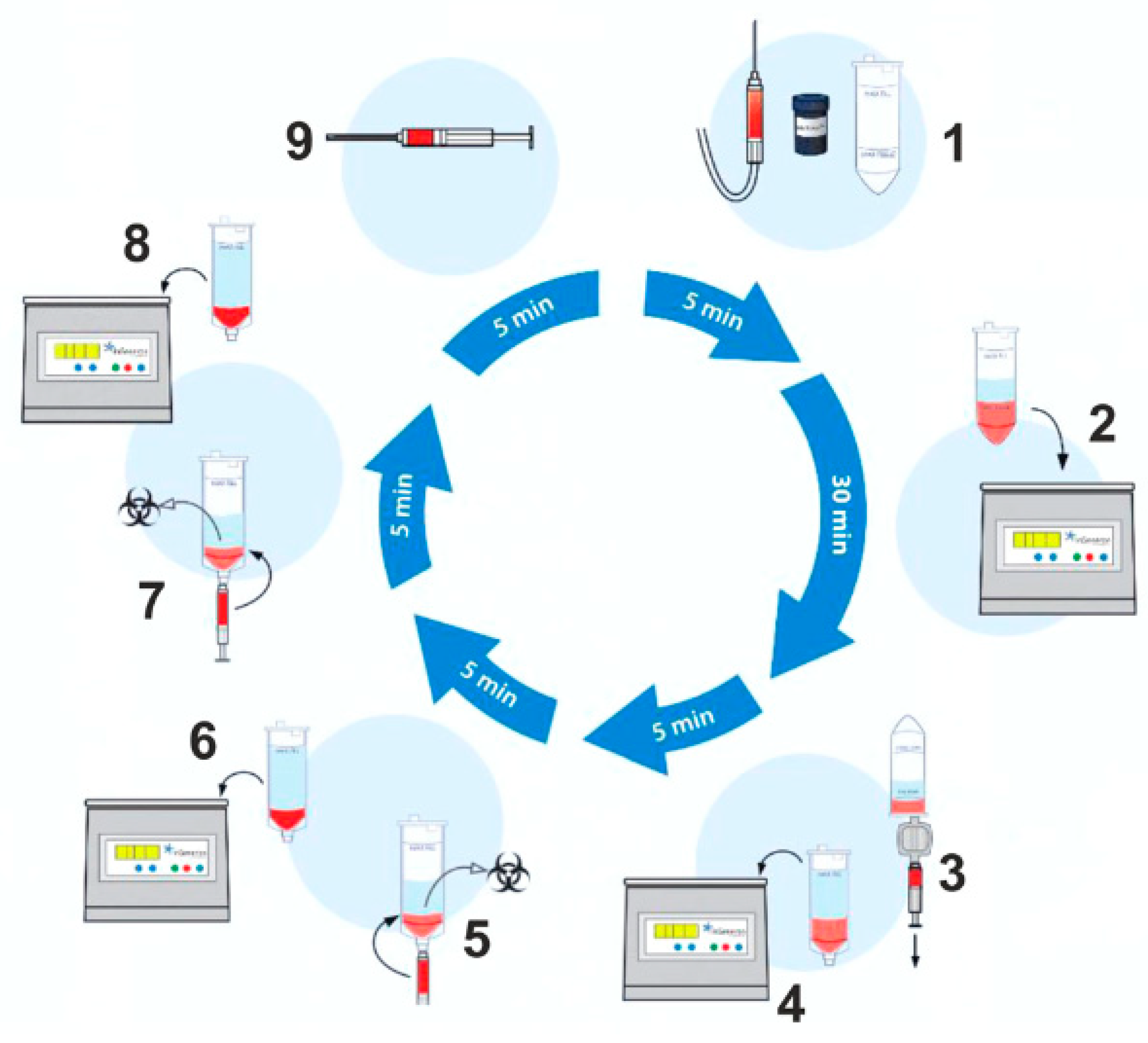

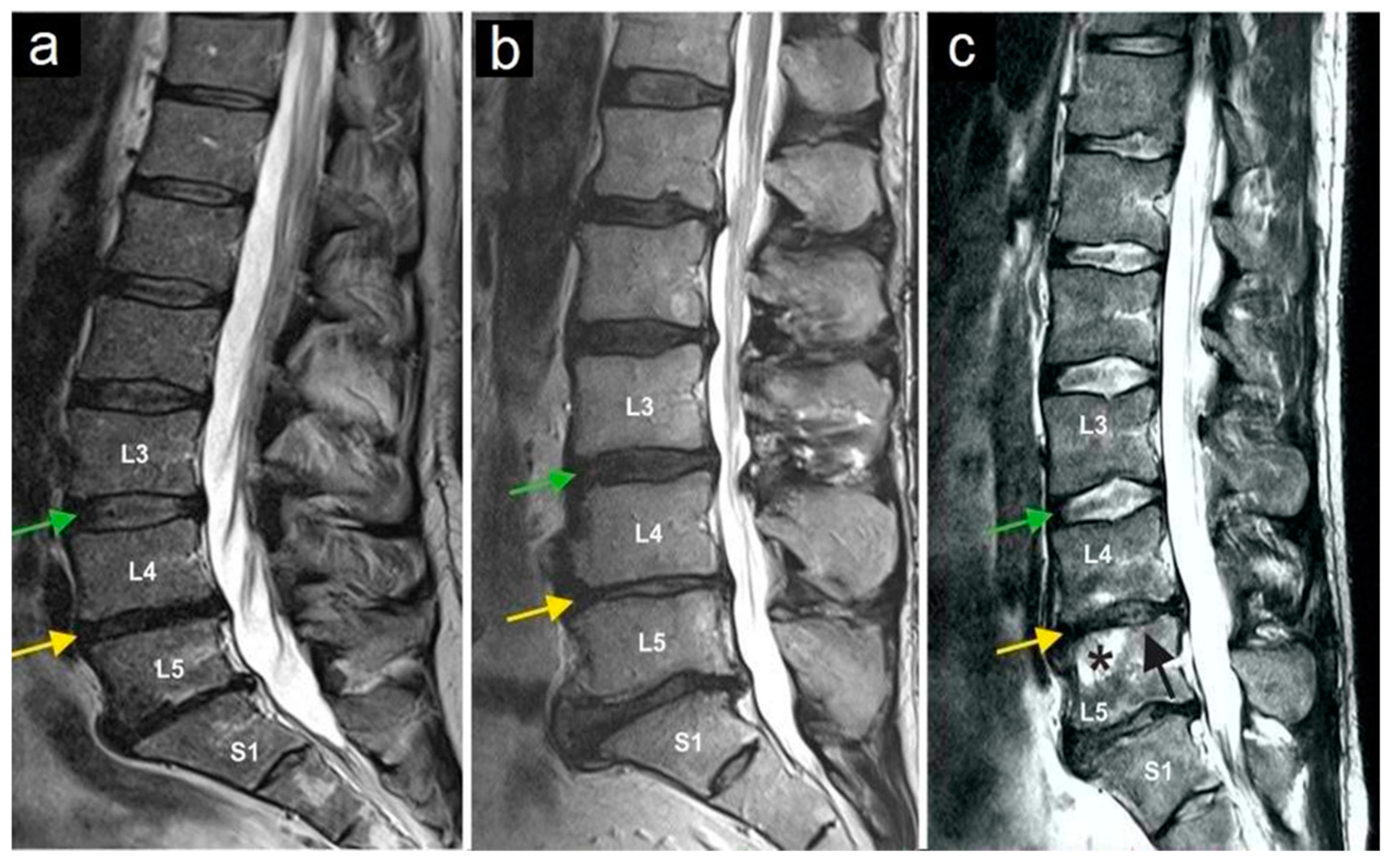
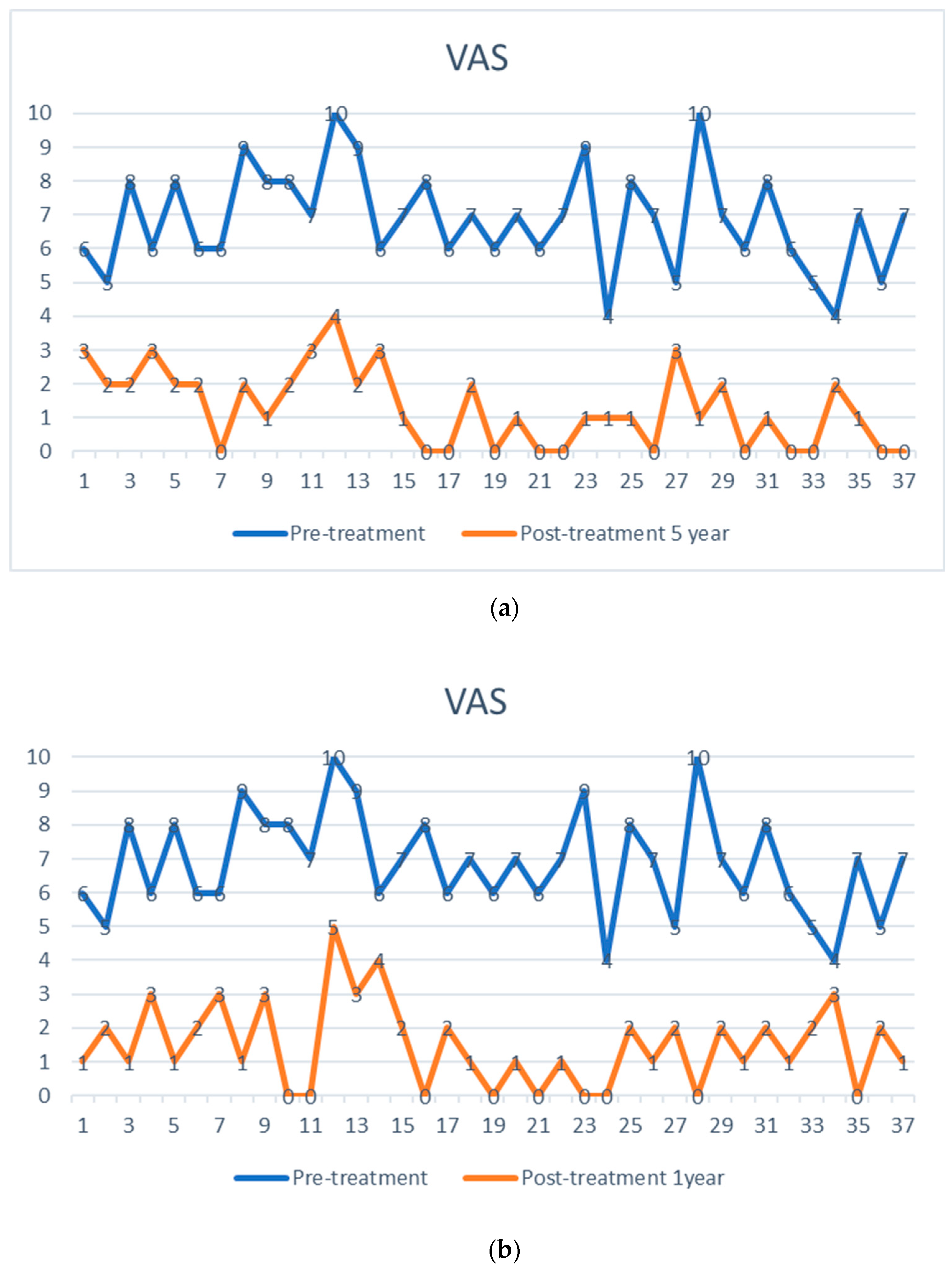
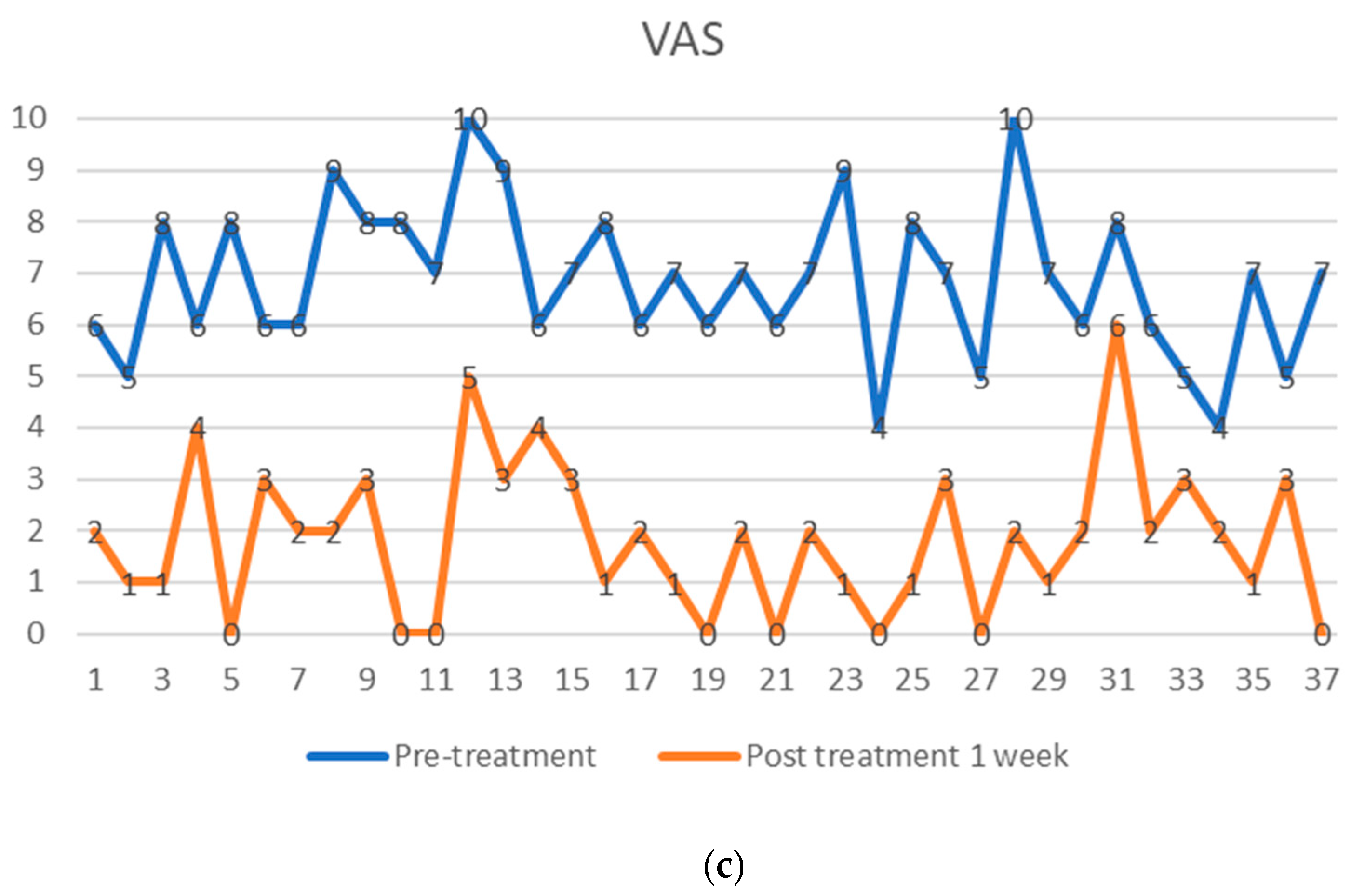
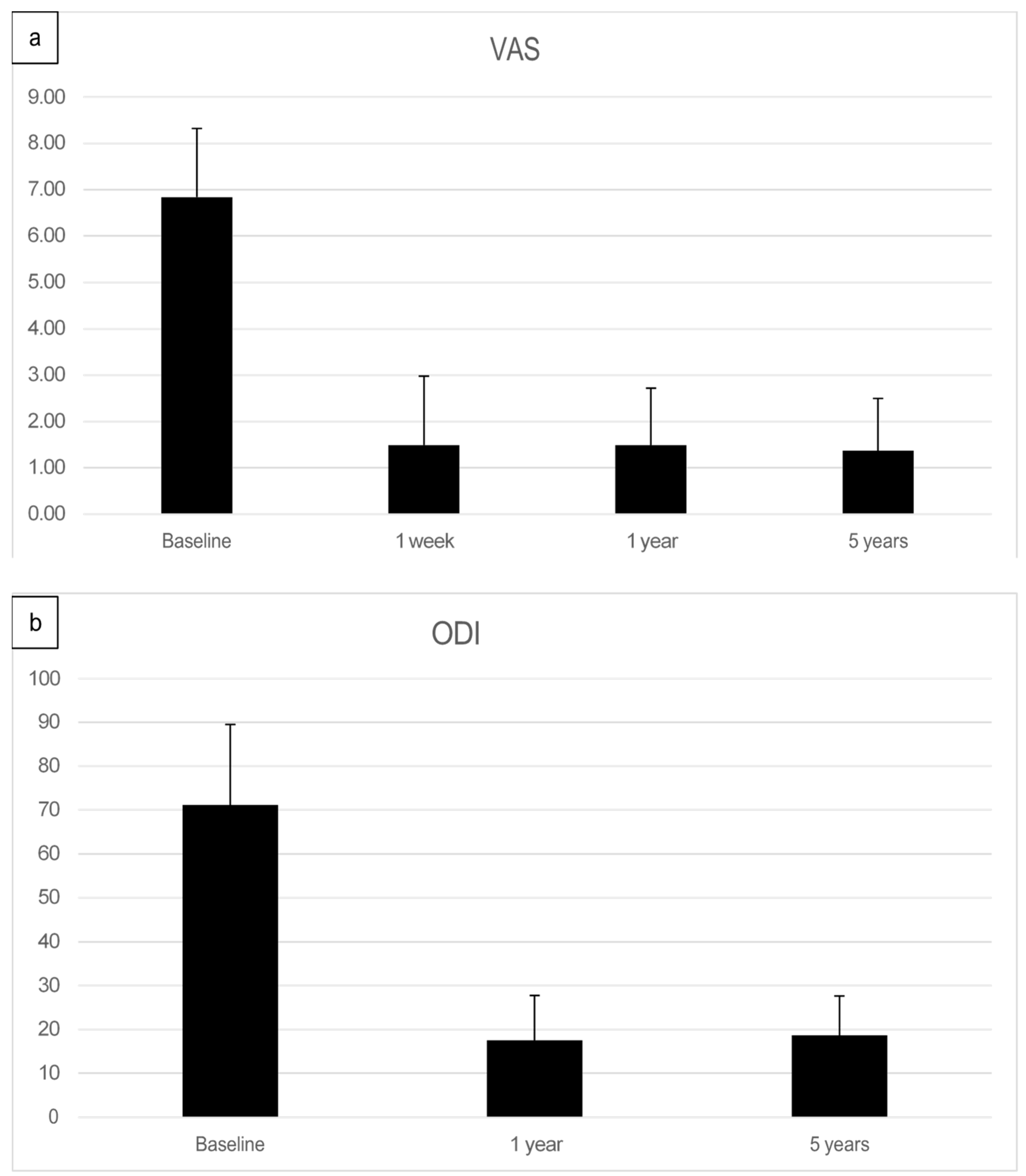
Disclaimer/Publisher’s Note: The statements, opinions and data contained in all publications are solely those of the individual author(s) and contributor(s) and not of MDPI and/or the editor(s). MDPI and/or the editor(s) disclaim responsibility for any injury to people or property resulting from any ideas, methods, instructions or products referred to in the content. |
© 2023 by the authors. Licensee MDPI, Basel, Switzerland. This article is an open access article distributed under the terms and conditions of the Creative Commons Attribution (CC BY) license (https://creativecommons.org/licenses/by/4.0/).
Share and Cite
Rothoerl, R.; Tomelden, J.; Alt, E.U. Safety and Efficacy of Autologous Stem Cell Treatment for Facetogenic Chronic Back Pain. J. Pers. Med. 2023, 13, 436. https://doi.org/10.3390/jpm13030436
Rothoerl R, Tomelden J, Alt EU. Safety and Efficacy of Autologous Stem Cell Treatment for Facetogenic Chronic Back Pain. Journal of Personalized Medicine. 2023; 13(3):436. https://doi.org/10.3390/jpm13030436
Chicago/Turabian StyleRothoerl, Ralf, Junee Tomelden, and Eckhard Udo Alt. 2023. "Safety and Efficacy of Autologous Stem Cell Treatment for Facetogenic Chronic Back Pain" Journal of Personalized Medicine 13, no. 3: 436. https://doi.org/10.3390/jpm13030436
APA StyleRothoerl, R., Tomelden, J., & Alt, E. U. (2023). Safety and Efficacy of Autologous Stem Cell Treatment for Facetogenic Chronic Back Pain. Journal of Personalized Medicine, 13(3), 436. https://doi.org/10.3390/jpm13030436







